
ART MATERIAL
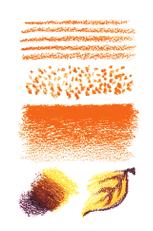
Oil pastel is smooth, with thick colors and easy to draw.
Crayon is easier to draw lines because of hardness than soft oil pastels.
Comparing soft oil pastel and crayon, the oil pastel is softer and has stronger colors while the crayon is harder and therefore
less stick to hands.


Gel-Crayon is even softer than oil pastels.
It's easy to mix with water and has a
thick layer of bright colors.
TITI Gel-Crayon is a new concept of crayon that has many advantages, including very soft touch, vivid color, easy color-blending. (the color stays clear even when water is applied)

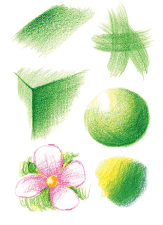
TITI color-pencil is strong in colors and usually the first coloring material for the children.
It is best suited for sketching/line drawing, but also good for painting.
Its color leads are covered with paper or plastic, therefore do not stick to hands; clean painting.
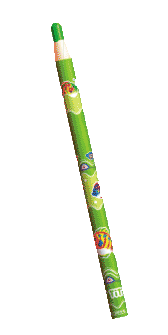
ART TECHNIQUE
Draw a line with crayon on the paper and then paint over with watercolors.
The watercolors stay except on the crayons because crayon is water-repellent.
Battic
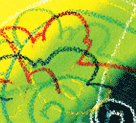
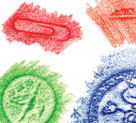
Frottago
Collect objects with bumps such as tree barks, coins, wire mesh, keys, etc.
Place the collected objects and cover them with a sheet of paper.
Rub on the paper with crayons or pencils.
Then you can see silhouette, and three-dimensional feelings of the subjects.
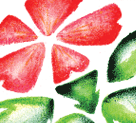
1. Cut the hole of a desired shape in the paper.
2. Place the cut paper on the drawing paper and draw over it with oil pastel or
watercolor paints.
3. You can repeadly use the technique for more complex expressions.
Stencil
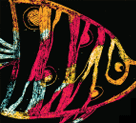
Scratch
1. Using oil pastel, paint a bright colors on the paper and cover it with
dark colors.
2. Scratch lines of various shapes with a scratch awl.
